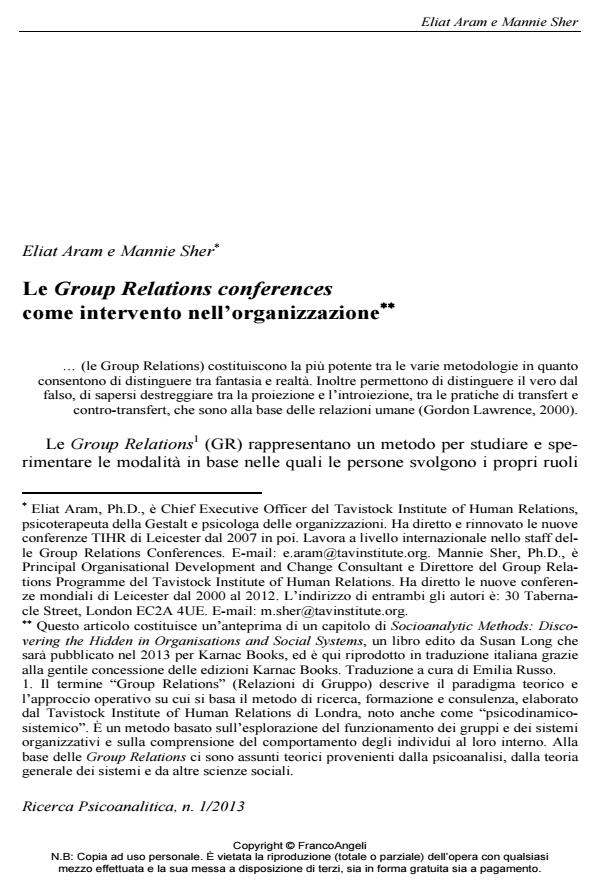Group relations conferences as intervention in the organisation
Journal title RICERCA PSICOANALITICA
Author/s Eliat Aram, Mannie Sher
Publishing Year 2013 Issue 2013/1
Language Italian Pages 18 P. 89-106 File size 677 KB
DOI 10.3280/RPR2013-001006
DOI is like a bar code for intellectual property: to have more infomation
click here
Below, you can see the article first page
If you want to buy this article in PDF format, you can do it, following the instructions to buy download credits

FrancoAngeli is member of Publishers International Linking Association, Inc (PILA), a not-for-profit association which run the CrossRef service enabling links to and from online scholarly content.
This paper identifies Group Relations as a method for studying groups and observing how people perform their roles in groups and systems. The method helps to distinguish between fantasy and reality; to judge between truth and the lie; to come to grips between projection and introjection, between transference and countertransference. The paper describes the features of Group Relations work including working with transference and counter-transference phenomena; skill in interpreting group unconscious dynamics; working within the boundaries of space and time as well as within psychological boundaries; being clear about working on roles and tasks; working with the group-as-a-whole, and being able to generate working hypotheses about groups and their organisational functioning.
Keywords: Tavistock; Group Relations; dynamics; unconscious; projection; introjection, transference; countertransference
Eliat Aram, Mannie Sher, Le Group Relations conferences come intervento nell’organizzazione in "RICERCA PSICOANALITICA" 1/2013, pp 89-106, DOI: 10.3280/RPR2013-001006